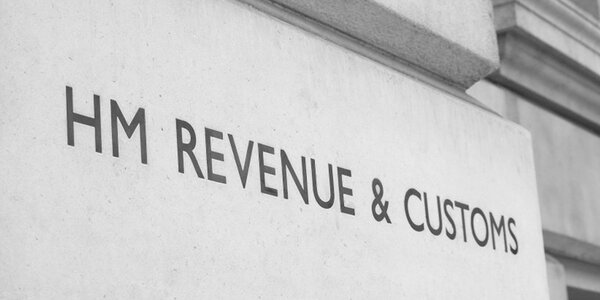Ever glanced at your payslip and wondered what that PAYE deduction is all about? You're not alone. PAYE is a fundamental part of the UK tax system that affects millions of workers every payday.
Understanding PAYE helps you make sense of your take-home pay and tax contributions. It's essentially the system that collects Income Tax and National Insurance directly from your wages.
The UK's first personal tax app, Pie, breaks down all your deductions visually so you can see exactly where your money goes. Or if you're just here to get to grips with it all, let's break it down!
What Does PAYE Mean on Your Payslip?
PAYE stands for “Pay As You Earn”. It’s the system HM Revenue and Customs (HMRC) uses to collect Income Tax and National Insurance contributions directly from your wages before you get paid.
Introduced in 1944, PAYE was designed to make tax collection simpler for everyone. Rather than paying one big tax bill at the end of the year, your tax is spread across your pay periods.
Every time you get paid, your employer calculates how much tax you owe based on your earnings and tax code. They then send this straight to HM Revenue and Customs (HMRC) on your behalf. Your payslip may also show a PAYE reference number or employee number, which are used for payroll tracking and identifying your tax contributions.
This is why your payslip shows your gross salary (the full amount you’ve earned) and your net pay (what actually hits your bank account) after PAYE deductions.

How PAYE Works on Your Monthly Payslip
Your tax code is the key to how PAYE works. This code tells your employer how much tax-free income you’re entitled to and therefore how much tax to deduct. A common mistake is having the wrong tax code, which can lead to incorrect deductions.
The standard tax code for most people is 1257L (for the 2023/24 tax year). This gives you the full personal allowance of £12,570 before tax kicks in.
Your employer’s payroll system uses your tax code along with your earnings to calculate exactly how much Income Tax to take. It also works out your National Insurance contributions.
PAYE is designed to be cumulative, meaning it adjusts throughout the tax year. This system helps keep everything in order so that tax and other deductions are accurate. If you paid too much tax in one month, you might pay less the next month to balance things out.
PAYE can cover a range of deductions, including income tax, National Insurance, pension contributions, and student loan repayments. When you look at your payslip, you may see these deductions such as student loan repayments processed through PAYE.
PAYE and Your Employment Status
Understanding your employment status is key to knowing how PAYE affects the way you pay income tax and national insurance contributions. If you’re an employee, your employer deducts income tax and national insurance directly from your wages through the PAYE system. This means that every time you get paid, your tax and national insurance are automatically taken care of, helping you stay on track throughout the tax year.
However, if you’re self employed, the process is different. Instead of having tax and national insurance deducted automatically, you’re responsible for reporting your income and paying tax yourself. This is done by completing a Self Assessment tax return each year, where you declare your earnings and calculate how much income tax and national insurance contributions you owe.
For employees, PAYE makes it simple to pay tax as you earn, ensuring you’re subject to the correct deductions based on your income and tax code. For the self employed, it’s important to keep accurate records and understand your obligations to avoid any surprises at the end of the year. No matter your employment status, understanding how the system works helps you stay compliant and avoid mistakes when it comes to paying tax and national insurance.

Common PAYE Entries on Your Payslip
On your payslip, you’ll typically see “PAYE” or “Income Tax” listed as a deduction. This shows the exact amount of tax taken from that specific pay packet. Pension and pension contributions may also appear as separate entries on your payslip, showing both employee and employer pension contributions. You may receive information about your pension provider, who manages your pension scheme and deductions.
You’ll also notice “Year to Date” figures, which show the total tax you’ve paid so far in the current tax year. The tax year runs from 6 April to 5 April.
Your tax code should be clearly displayed somewhere on your payslip. It’s worth checking this is correct each time you get paid. You may also receive official communications about your tax code and pension contributions.
National Insurance contributions are usually shown separately from Income Tax. However, both are collected through the PAYE system. If you receive pension payments, your pension provider may deduct income tax from your pension before you receive it, similar to how PAYE works for wages. These deductions help fund public services, including pensions.
Understanding Tax Codes on Your Payslip
Your tax code might look like a random mix of numbers and letters. In reality, it contains important information about your tax situation.
The numbers typically represent your tax-free allowance divided by 10. So 1257 means you can earn £12,570 before paying tax.
The letters give more specific information. The most common is ‘L’, which means you’re entitled to the standard personal allowance.
Other codes like ‘BR’ (Basic Rate) mean all your income is taxed at the basic rate. A ‘K’ code means you have income that isn’t being taxed another way or taxable benefits worth more than your allowance.
For example, if your tax code is 1257L, you can earn up to £12,570 before any tax is deducted. If your code is BR, all your income from that job will be taxed at 20%, with no tax-free allowance applied.
I once received a payslip with a BR code after starting a new job. My take-home pay was noticeably lower than expected. After contacting HMRC, they corrected my code to 1257L, and I received a refund in my next pay packet.

What To Do If Your PAYE Deductions Look Wrong
If your PAYE deductions seem too high or too low, first check your tax code is correct for your situation. A wrong code is the most common cause of incorrect tax.
Compare what you’re actually being taxed with what you expect based on your salary and personal allowance. Small discrepancies can add up over time.
Keep records of your payslips to spot any unusual changes or inconsistencies in your tax deductions. Digital copies work just as well as paper ones.
If something doesn’t look right, contact HMRC (HM Revenue and Customs) directly. Customs is responsible for ensuring your tax code and deductions are correct, and they can review your tax code and make adjustments if needed.
Your employer can’t change your tax code without HMRC’s instruction. Employers are responsible for following the correct procedures as set by HM Revenue and Customs, and they simply follow the code they’ve been given.
Your PAYE Tax Obligations and Helpful Resources
Staying on top of your PAYE tax obligations is essential for every employee. Your tax code, which you’ll find on your payslip or by using the HMRC app, tells your employer exactly how much income tax to deduct from your gross pay. It’s important to check that your tax code is correct, as mistakes can lead to paying too much or too little tax and national insurance contributions.
To help you manage your PAYE responsibilities, there are several resources available. The HMRC website and the UK Government’s online services allow you to review your tax code, track your PAYE payments, and understand your deductions. You can also register for a personal tax account with HMRC, giving you access to your tax details, previous payslips, and payment history all in one place.

How PAYE Relates to Your Annual Tax Return
For most employees, PAYE means you don’t need to fill in a Self Assessment tax return. The system is designed to collect the right amount automatically throughout the year.
However, if you have additional income from freelance work, property rental, or significant savings interest, you might need to complete a tax return.
At the end of each tax year, your business (employer) is required to give you a P60 form. This summarises all your earnings and tax paid through PAYE.
The P60 helps track the revenue collected through PAYE for both individuals and the government. This P60 is an important document to keep. It’s proof of tax paid and might be needed if you ever need to claim a tax refund or apply for a mortgage.
Final Thoughts
PAYE makes tax payment manageable by spreading it throughout the year. This is much better than hitting you with one massive bill.
Understanding your payslip deductions helps ensure you're paying the correct amount. It also ensures you're not missing out on any tax allowances you're entitled to.
If your circumstances change perhaps you get a second job or start receiving benefits let HMRC know promptly. This keeps your tax code updated.
Remember that while PAYE aims to collect the right amount of tax, it's not always perfect. Sometimes you might end up paying too much or too little.
This is why checking your payslip regularly is so important. A few minutes each month could save you from tax headaches later.

Pie: Simplifying PAYE Tax Understanding
The UK's first personal tax app, Pie, takes the mystery out of those PAYE deductions. We provide clear visual breakdowns of exactly where your money goes each month.
If you work multiple jobs, our dashboard shows how your tax is calculated across all your income sources. This helps you spot if you're being overtaxed.
We automatically flag potential tax code errors and unusual deductions. You can quickly identify if something needs HMRC's attention.
Our real-time tax calculator updates as your circumstances change. This gives you an accurate picture of your take-home pay after PAYE deductions.
Curious to see how it works? Explore Pie to get a clearer picture of your personal tax situation.











